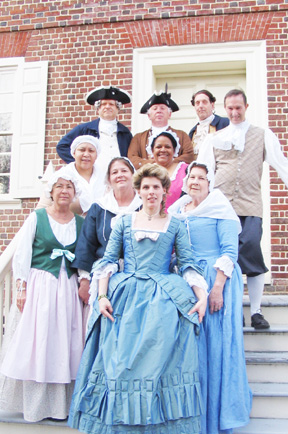Chesapeake Bay's Independent Newspaper ~ Since 1993
1629 Forest Drive, Annapolis, MD 21403 ~ 410-626-9888
Volume xviii, Issue 11 ~ March 18 - March 24, 2010
Home \\ Correspondence \\ from the Editor \\ Submit a Letter \\ Classifieds \\ Contact Us
Best of the Bay \\ Dining Guide \\ Home & Garden Guide \\ Archives \\ Distribution \\ Advertising![]()


A Time for New BeginningsWhat is Maryland Day, and why should we care?
|
|
|
![]() Cecilius Calvert, the second Lord Baltimore, had been granted the rights to establish a colony by King Charles I of England.
Cecilius Calvert, the second Lord Baltimore, had been granted the rights to establish a colony by King Charles I of England.
His father, George Calvert, the first Lord Baltimore who had died a few months before, envisioned the colony as a place where Roman Catholics could practice their religion.
According to Kummerow, the expedition — led by Leonard Calvert, Cecilius’ brother — was much better planned than those landing in Virginia in 1607 or Massachusetts in 1620.
The Calverts had information about the country that these other expeditions lacked. The first Lord Baltimore knew that Newfoundland, his alternate choice for a colony, had far more severe winters. And since Captain John Smith had recently described and mapped his travels around Chesapeake Bay and its many rivers, Leonard Calvert knew where his expedition was going.
And unlike the founders of Virginia and Massachusetts, the Maryland settlers “very carefully chose to arrive just before the planting season,” said Kummerow.
The colonists took time to explore. One thing they did, according to Kummerow, was to go “up the Potomac and make peace with the Indians.”
Then it was time to celebrate.
A New Beginning
March 25 is not the date the settlers first set foot in Maryland, as is sometimes said.
March 25 is the date when the colonists erected a large cross and held a religious service on St. Clements Island in Chesapeake Bay to celebrate the founding of a colony where Catholics — and those of any faith — could worship as they pleased.
The settlers deliberately chose this date.
The symbolism of March 25 may be lost to us, but, according to Kummerow, it wasn’t lost to Leonard Calvert, the settlers and the Jesuit priests who accompanied the expedition.
First, March 25 is the date of the Feast of Annunciation, an important date in the Catholic calendar. This celebrates the time when the Angel Gabriel told Mary she was pregnant with the Son of God.
Second, the date is close to the first day of spring, a time of new beginnings.
Third, in 1634, March 25 was the first day of the English civil and legal year, according to the Julian calendar in use in England until 1752.
These Maryland colonists were starting something new. They wanted the world to know it.
It’s true that new things and fresh starts seem in short supply these days, but this coming of spring can remind us that adventures and opportunities lie ahead.
“Maryland Day is a very specific symbol for Maryland,” Kummerow said. “This is all about beginnings.”
For more information: www.marylandday.org
© COPYRIGHT 2010 by New Bay Enterprises, Inc. All rights reserved.


